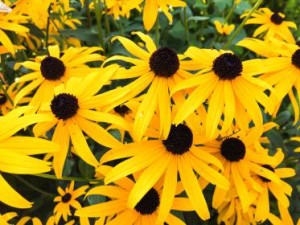Steps to Planting and Identifying Wildflowers for a Beautiful Landscape
 Formal gardens have a sort of staid and grand beauty. They are akin to a masterful sculpture. The hand of the artist is as much on display as the hand of nature. By contrast, wildflower gardens have a relaxed and comfortable feel that shines full attention on the whimsical beauty to be found in nature. Because these gardens celebrate the gems nature tends to strew casually around, identifying wildflowers in your garden will honor native species and promote an appreciation for them. In addition, you’ll soon find that more than your friends and neighbors are interested in visiting your wildflower garden.
Formal gardens have a sort of staid and grand beauty. They are akin to a masterful sculpture. The hand of the artist is as much on display as the hand of nature. By contrast, wildflower gardens have a relaxed and comfortable feel that shines full attention on the whimsical beauty to be found in nature. Because these gardens celebrate the gems nature tends to strew casually around, identifying wildflowers in your garden will honor native species and promote an appreciation for them. In addition, you’ll soon find that more than your friends and neighbors are interested in visiting your wildflower garden.
Getting Your Space Ready
Depending upon your space and how you prefer to garden, you can plant your wildflower garden either in-the-ground or in a raised flower bed. Keep in mind that some wildflowers prefer shade while others prefer direct sunshine; choose your location accordingly. Meadow flowers will crave a sunny spot while woodland blooms will prefer a partial shade environment. Most wildflower gardens look their best in bright sunshine.
Whether you plant in-the-ground or above it you’ll want to mix the soil well with compost and sand. The sand will help keep your soil well-drained. If you plant in a raised bed, you’ll also need to place about two inches of stone or rock at the base to help with drainage. Some experts suggest stirring in super phosphate to help your flowers take root.
Getting the Seeds Planted
Once you’ve prepared the soil, it’s time to create your seed beds. Do this by creating one inch rows with either a trowel or an iron rake. The rake is far easier and wonderfully effective. Now you can sprinkle your seeds along the rows. After you’ve done that, take your rake and run it gently crosswise over the garden in checkerboard fashion. One more pass with the rake in the original direction should lay soil softly over the majority of your seeds.
Getting the Moisture Right
Now that your seeds are under a light blanket of soil it’s time to give them a soft watering to set them in place. You’ll need to repeat this gentle-rain-like watering each day until your seeds sprout above ground. Avoid soaking the soil. You don’t want a muddy environment or puddling that could dislodge your seeds/sprouts. On the other hand, be aware that windy or hot conditions can quickly dry out the soil. You want to maintain damp, not clumpy, soil conditions.
Getting out the Guestbook
Common choices for a wildflower garden include the purple Coneflower, pink Joe-pye Weed, tall and purplish Blazing Star, Butterfly Weed, Black-eyed Susan, delicate Aster and Shasta Daisy. Not only will your friends enjoy hours beside your natural wonder, but you will have the added pleasure of hosting plenty of other tiny visitors as well. Butterflies, ladybugs, honeybees and even nectar-drinking hummingbirds will be stopping by.
Even though your garden will be a riot of native beauties, identifying wildflowers is still a good idea since many people recognize blooms without knowing the name of the flower. And when it comes to identifying wildflowers no one does it better than Kincaid Plant Markers. We sell only the sturdiest and most attractive markers for labeling in your garden. Check us out and get inspired to start your very own wildflower garden.
